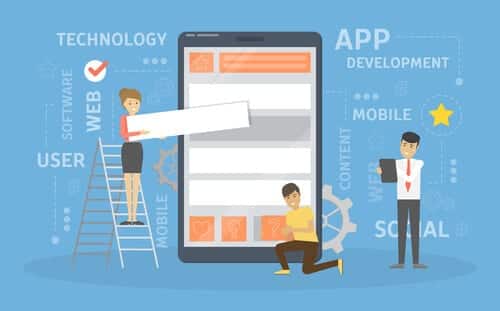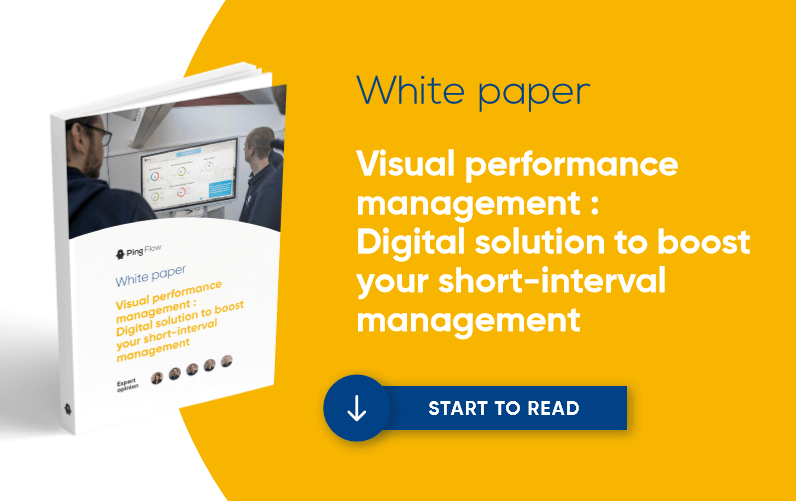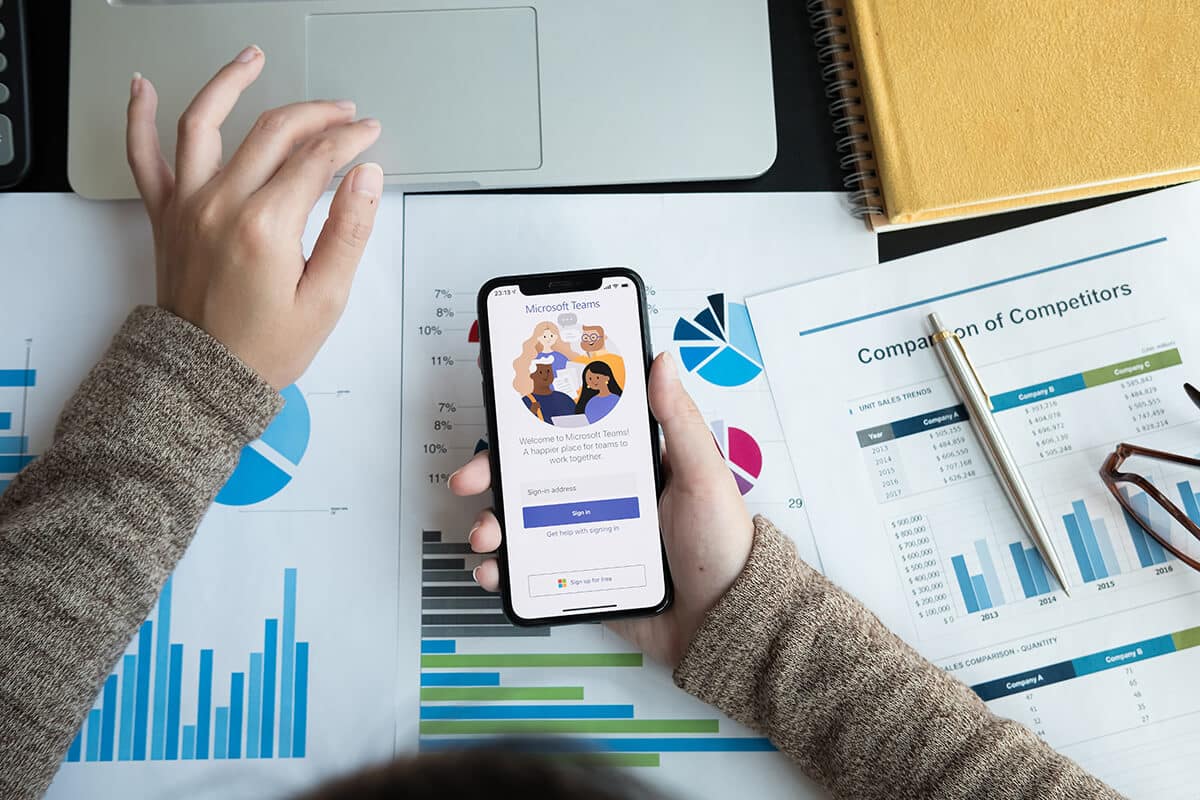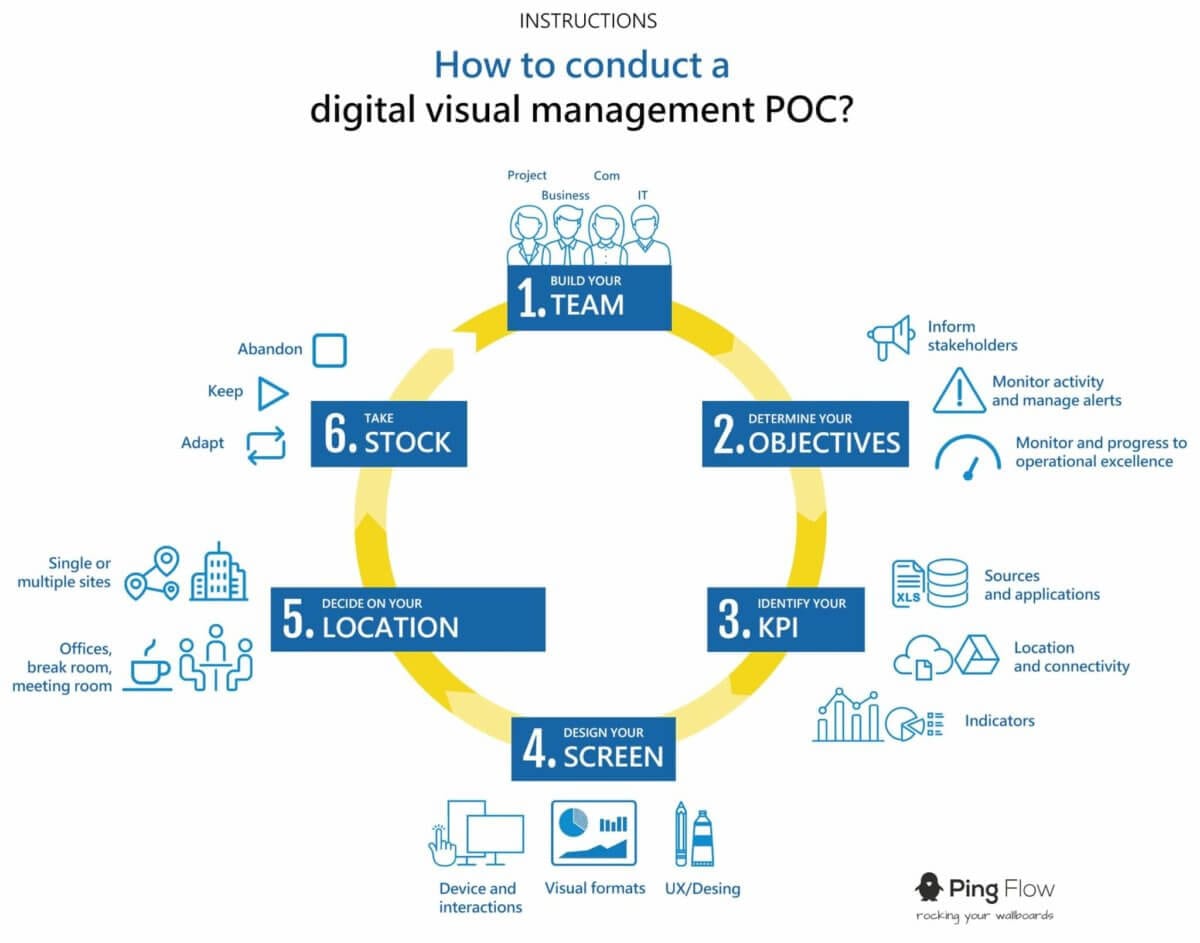Our previous article discussed the challenges of digitising visual performance management boards. In this article we will be discussing the real-life benefits in the field.
Facilitate information sharing

For this to work it is important that team members be involved in the deployment of the solution, in the construction or reconstruction of screens (digital systems offer additional functionality in terms of dynamic display), define what is important, what is not so important. Co-building is a key success factor in this type of project.
The changing role of the manager

However, this transformation in the role of the manager takes time and is difficult to achieve without support. It is therefore essential that all levels of management are involved in the project to provide the required support.. And, of course, you can count on support from your visual management solution supplier.
Exploiting business area data

Obviously, it is necessary to properly involve the different business areas, as well as your information systems department to guarantee functionality, avoid misunderstandings and encourage team working.
Improving problem solving
Another point, and not least is the digitisation of visual management panels to improve problem solving. How? First, by fielding problems directly from operational staff, and by highlighting them quickly and clearly. This improves reactivity and intervention time and encourages the search for solutions to complex problems. Once incidents are detected, they must be assigned to a problem-solving action plan using a PDCA (Plan Do Check Act) approach. Digital visual management solutions also offer modules dedicated to specific needs (Andon, throughput, logistics, etc.).
Better manage information sharing on different sites

It is sufficient to have an Internet connection to update the various panels. You can therefore distribute the same data or not to the sites of your choice. This allows you to mix local and more general data, while maintaining close links with your teams.
Committing to a zero paper approach
As mentioned above, the digitalisation of visual management panels solves the problem of the time required to update information, but also has ecological considerations. By limiting the use of paper, you will reduce consumption, which is an important and current concern.
Digitising visual management screens offers numerous benefits. However, they will only be effective if the project is well thought out, with engagement from the whole of the company and properly supported by your project partner.




